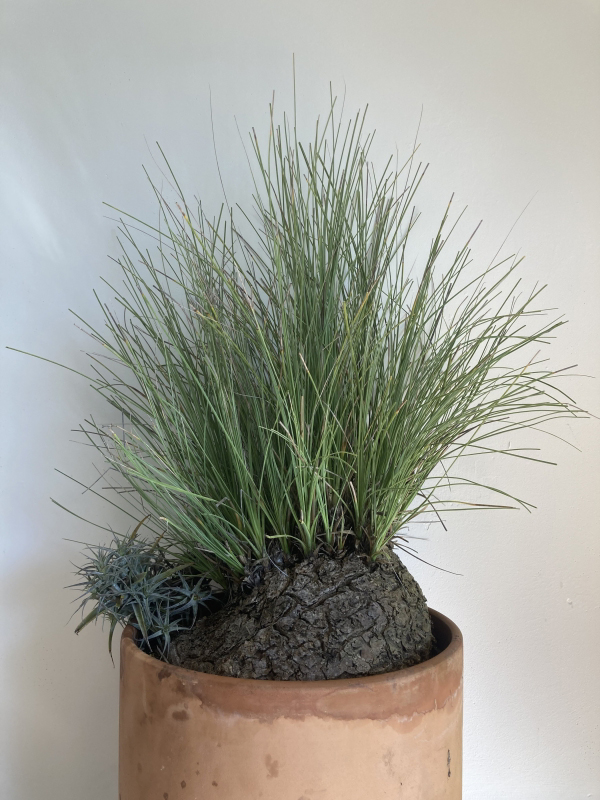

| synonyms | Beaucarnea hookeri | |
| height | 12–24in | |
| width | 10–18in | |
| tolerates | Coast, Cold, Cool Summers, Drought, Deer , Heat, Pots, Rooftops, Wind | |
| water needs |
Low | |
| water info |
If used as a grassy element in the garden, keeping the caudex (swollen plant base) beneath the soil, this plant is very drought tolerant (compared to other grasses). However, if grown as a display plant, by elevating the caudex, this plant will want more consistent watering than other caudiciforms. In this case it should be watered before fully dried out. For this reason this plant will need very frequent waterings (once or twice a week) if grown in a shallow dish (as often seen by caudiciform collectors). While this plant likes good drainage, it doesn’t need as sharp of drainage as other fussy caudiciforms - standard cactus mix is idea. |
|
| hardy to |
15F | |
| exposure | Part Sun – Full Sun | |
| indoor outdoor |
Outdoor | |
| drainage | In Ground: Cactus Mix, In Pots: Cactus Mix, Tolerates Sandy Soil | |
| fertilizing | All Purpose | |
| origin | C Mexico | |
| california native |
No | |
| sunset zones |
13–24 |
Full Sun
Six or more hours of sun beams directly landing on the plant's leaves.
Part Shade
Three to five hours of sun beams directly landing on the plant's leaves.
Part Sun
One to two hours of sun beams directly landing on the plants leaves.
Full Shade
The plant is never fully lit by sun beams,
but is in a bright spot or has dappled sunbeams playing over the leaves throughout the day.
Deep Shade
The plant never has dappled light on the leaves, and is in a place that feels dim, even on a nice sunny day.
